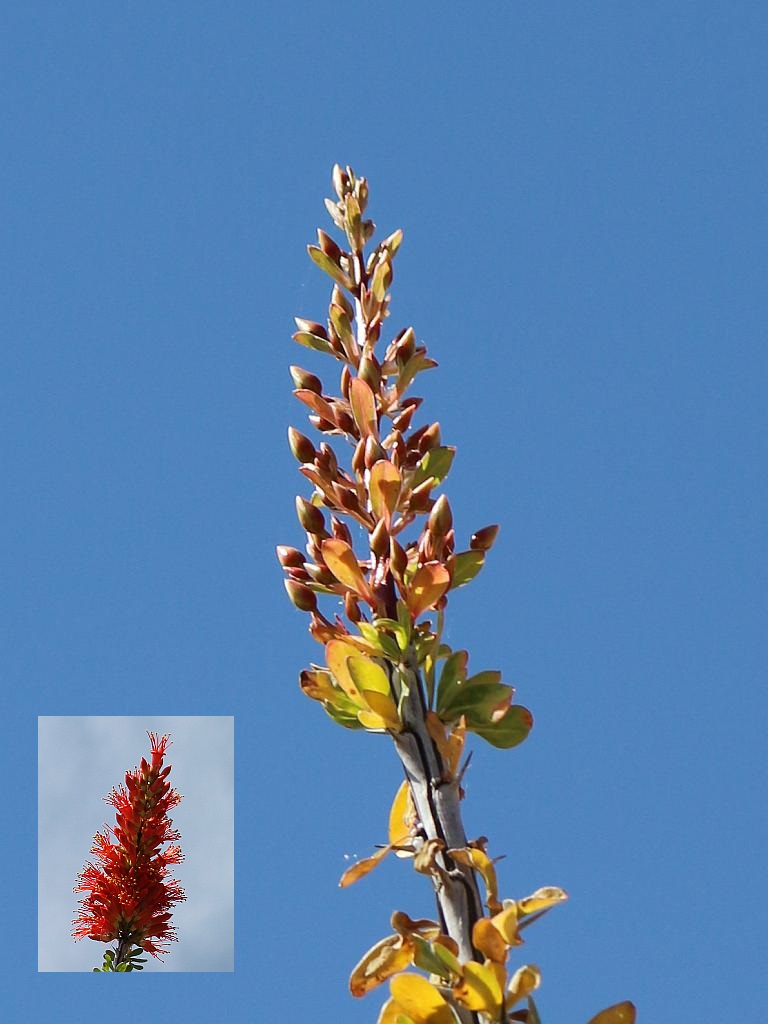We had the landscape guys replace the old ocotillo cactus that was in front of the house outside of the courtyard last year because it was dead. The new one is in the same place and is showing every sign of being a viable addition to our xeriscape.
Springtime is when many of the desert cacti get flowers and the ocotillo is no exception. The photo at the right shows the top of one of our ocotillo.s canes with the makings of a cluster of flowers. The inset shows a cluster that I photographed downtown yesterday. Click on the image to enlarge.
I am very excited to finally have ocotillo flowers. The old ocotillo never produced much of anything in the way of leaves nor flowers before it gave up the ghost last year. It once tried to have a flower, but it dried up and broke off before really becoming one.
Here are a few factoids about ocotillos from Wikipedia:
Fouquieria splendens (commonly known as ocotillo, but also referred to as coachwhip, candlewood, slimwood, desert coral, Jacob’s Staff, Jacob Cactus, and vine cactus) is a plant indigenous to the Sonoran Desert and Chihuahuan Desert in the Southwestern United States and northern Mexico.
Ocotillo is not a true cactus. For much of the year, the plant appears to be an arrangement of large spiny dead sticks, although closer examination reveals that the stems are partly green. With rainfall the plant quickly becomes lush with small (less than 1 inch) ovate leaves, which may remain for weeks or even months.
Individual stems may reach a diameter of 2 inches at the base, and the plant may grow to a height of 30 feet. The plant branches very heavily at its base, but above that the branches are pole-like and only infrequently divide further, and specimens in cultivation may not exhibit any secondary branches. The leaf stalks harden into blunt spines, and new leaves sprout from the base of the spine.
The bright crimson flowers appear especially after rainfall in spring, summer, and occasionally fall. Flowers are clustered indeterminately at the tips of each mature stem. Individual flowers are mildly zygomorphic and are pollinated by hummingbirds and native carpenter bees.

